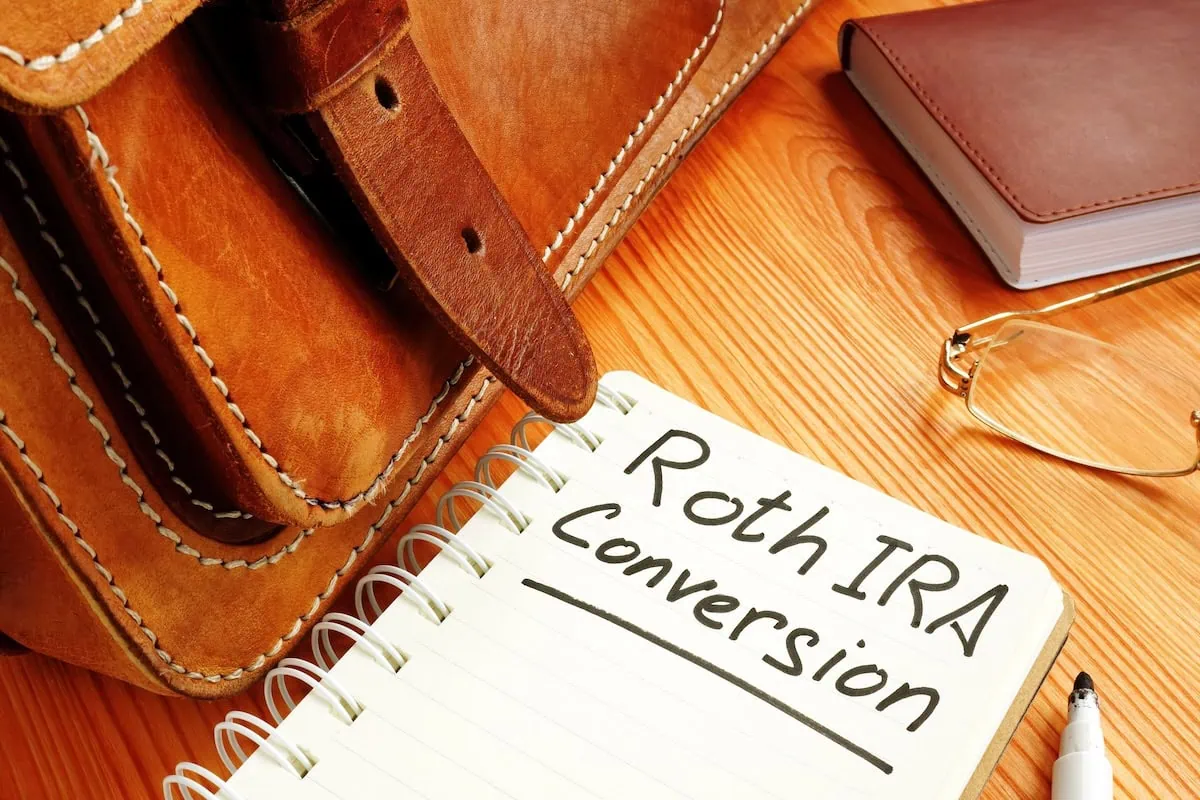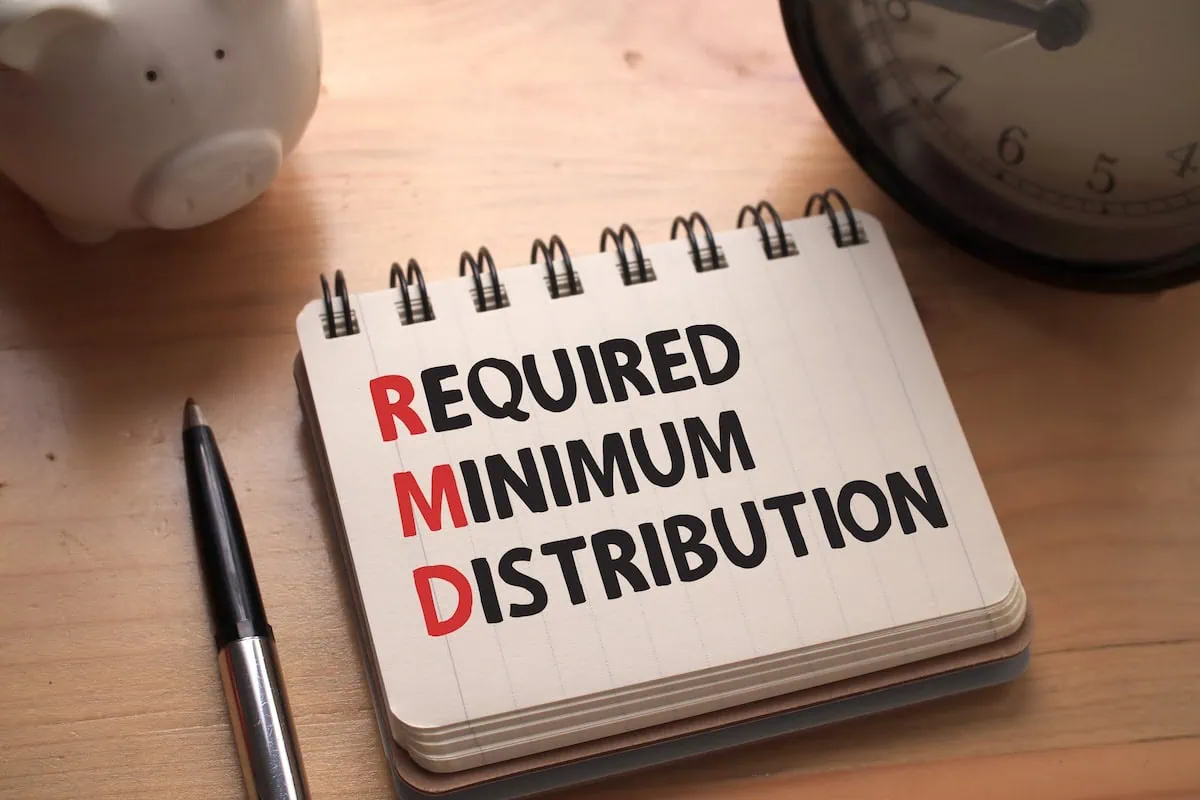The Roth IRA’s allure is easy to understand: The IRS is pretty much always in the rear-view.
When you contribute money, that money has already been taxed. So your money grows tax-free in the account, and you withdraw it tax-free too (as long as you withdraw while following the rules).
However, if you didn’t open a Roth IRA when you were younger (or even if you did but want to sock even more away), you can consider a process called a Roth conversion, in which you take funds from a traditional retirement account (typically an IRA) and put them into a Roth account (typically a Roth IRA).
The process can have significant financial benefits, but it’s not always straightforward, and there are some pitfalls you’ll want to avoid lest you get hit with taxes and penalties, or run into other financial consequences. Today, I’ll take a look at some of the most common mistakes.
Table of Contents
Roth IRA Annual Income Limitations

Before we dive into conversion errors, let’s briefly discuss who is eligible for a Roth IRA, as there are income limits for contributing to these accounts.
Your maximum contribution to a Roth IRA in 2025 is gradually reduced to zero if your 2025 modified adjusted gross income (MAGI) is as follows:
–$150,000 to less than $165,000 if you file single or head of household
–$236,000 to less than $246,000 for joint filers
You can’t contribute to a Roth IRA at all in 2025 if your 2025 MAGI exceeds the following:
–$165,000 or more if you file single or head of household
–$246,000 or more if you’re married and file jointly
If you’re married and file separately, your annual maximum contribution limit is gradually reduced to zero if your MAGI is between $0 to less than $10,000.
There is a legal loophole, however: If you earn above the limits, you still may be able to do a “backdoor” Roth conversion, which involves simultaneously making nondeductible contributions to a traditional IRA and then completing a Roth conversion shortly thereafter.
Don’t Let a Smart Tax Move Become a Costly Mistake

If you want to reduce the taxes you’ll have to pay on withdrawals in retirement, a Roth conversion could be an excellent path to pursue.
The key words there are “could be.” After considering a number of factors, you might determine a Roth conversion isn’t for you.
But if you do decide to go through with a Roth conversion, you’ll want to avoid a number of potential pitfalls. Making these mistakes could saddle you with additional taxes and penalties, and result in other financial issues that could sap part of your nest egg.
1. Not Having Sufficient Funds to Pay for the Conversion

You’re required to pay taxes on a Roth conversion for the tax year in which you complete the conversion.
Past the strategic conversation about whether you’re better off financially taking the tax hit now than later, you also need to determine whether you have sufficient funds to pay that tax. Bank account balances ebb and flow, of course; you might not have enough liquid funds to cover the conversion cost for the year in which you do it.
Yes, you might be able to potentially pay the tax by selling assets, but that could create additional tax consequences.
In short: If you can’t afford the taxes right now, now might not be the right time for an IRA conversion.
Also keep in mind: The custodian of your traditional IRA withholds 10% federal tax from the converted funds. But ideally, you should be able to pay for a Roth conversion with non-IRA funds and request nothing be withheld on the conversion.
2. Withdrawing Money in Fewer Than Five Years

A Roth conversion is a long-term financial strategy, not a quick money hack. You’re not allowed to convert your money, then withdraw it quickly—at least not without negative consequences.
You must wait at least five years before withdrawing funds from a Roth conversion. If you withdraw converted funds before then, you’ll trigger both income taxes and a 10% IRS penalty.
Unless you’re certain you won’t need any of the funds you plan on converting in the next five years, hold off on a conversion. If you’re confident you won’t need the money that early, the five-year rule shouldn’t inhibit you from doing a conversion.
Related: What Is a Roth Conversion [A Tax-Smart Retirement Strategy]
Do you want to get serious about saving and planning for retirement? Sign up for Retire With Riley, Young and the Invested’s free retirement planning newsletter.
3. Accidentally Increasing Your Medicare Premiums

If you’re not on Medicare nor anywhere close to needing it, skip ahead. This potential mistake doesn’t apply to you.
But if you are on Medicare, or will be soon, pay attention.
After a Roth conversion, you report the income from the conversion on your federal tax return for the year. Medicare recipients whose modified gross adjusted income (MAGI) eclipses a set threshold must pay a monthly surcharge for Part B and Part D on top of their regular monthly premiums. So if you’re hovering just below that MAGI threshold, it’s possible a Roth conversion could propel you above it—and increase your premiums.
Thankfully, that doesn’t eliminate a Roth conversion as an option. You might just need to spread out a planned conversion across multiple years to avoid a premium hike.
Related: What’s the Best Tax Bracket for a Roth IRA Conversion?
4. Forgetting the Pro Rata Rule

If you’re executing a Roth conversion on a traditional IRA with both pre-tax and after-tax contributions, the pro rata rule applies to you.
The pro rata rule—which exists to prevent people from skirting Roth income limits to lower their tax bill—determines how much of a Roth conversion is considered pre-tax, and how much of it is considered after-tax. You calculate it using all non-Roth IRAs as the basis, not just the IRA you’re converting.
The formula: Divide the amount of after-tax funds across all IRAs by the amount of all funds across all IRAs. Multiply that number by the amount of funds to be converted to a Roth IRA, and you’ll get the amount of after-tax funds that will be converted to a Roth IRA.
Let’s look at an example.
You have $80,000 in pre-tax (deductible) funds in Traditional IRA 1. You have $20,000 in after-tax (non-deductible) funds in Traditional IRA 2. You want to convert all of the funds in Traditional IRA 2 into a Roth account.
- For purposes of the pro rata rule, you’ll consider the total value of all IRAs ($100,000), not just Traditional IRA 2.
- You divide $20,000 in after-tax funds by $100,000 in overall funds. That’s 0.2, or 20%.
- Because you plan on converting the entirety of Traditional IRA 2 ($20,000), multiply $20,000 by 0.2 to get $4,000, which is the amount of after-tax funds that will be converted.
- The remaining $16,000 of the funds are considered pre-tax, and you’d pay taxes on that $16,000 as part of the conversion.
Take the amount of money to be converted to a Roth IRA and multiply it by the non-taxable percentage to get the amount of after-tax funds that will be converted to a Roth IRA. To get the non-taxable percentage, divide your after-tax funds across all IRAs by total funds across all IRAs.
If it isn’t clear, this is a delicate process that’s best handled by a professional.
Related: Is a Roth Conversion Worth the Tax Bill? What to Weigh Before You Act
5. Not Reporting Your Conversion

Tax Form 8606 is used to report several pieces of financial information, including:
–Nondeductible contributions made to traditional IRAs
–Distributions from traditional, traditional SEP, or traditional IRAs if the person has a basis in these IRAs
–Distributions from Roth, Roth SEP, or Roth SIMPLE IRAs
–Conversion from traditional, traditional SEP, or traditional SIMPLE IRAs to Roth, Roth SEP, or Roth SIMPLE IRAs
We’re focusing on that last part.
If you don’t file Form 8606 after a conversion, you might not just be penalized by the IRS; you could even end up being taxed again on already-taxed funds.
Fortunately, this blunder can be fixed. If you catch your mistake, you can send IRS Form 1040-X (Amended U.S. Individual Income Tax Return) along with the forgotten Form 8606.
Related: How to Invest for (And in) Retirement: Strategies + Investment Options
6. Not Being Intentional With Your Timing

There are many considerations at play about whether or not a Roth conversion makes sense for a person and, if so, when to do it.
One popular time period to do a Roth conversion is in between when a person stops working and when they start collecting Social Security or have to pay required minimum distributions (RMDs).
After a person stops working, their taxable income typically goes down. By delaying Social Security payments or RMDs, they can keep themselves in a lower tax bracket—allowing themselves to pay less in taxes on a Roth conversion.
Another timing consideration revolves around market conditions. Bear markets are a common time to make Roth conversions. If you assume that the stock market will always bounce back (which it historically has, but it’s not a guarantee), then you benefit from a Roth conversion when your assets are low (and you’ll pay less tax on them), and still capture the upside of a market recovery from within the Roth IRA.
Related: What Are the Average Retirement Savings By Age?
7. Not Talking to a Financial Advisor

Roth conversions might appear difficult to navigate—and that’s because they are. There are numerous steps involved, the stakes are high, and they’re not a one-size-fits-all strategy.
Thus, you might want to get a financial advisor involved.
A financial advisor can examine the details of your account balances and future monetary goals to determine not just when to execute a Roth conversion, but how to do so in the most financially optimal way. They can also help you with considerations mentioned above, such as the risks of increasing your Medicare premiums or navigating market conditions.
A little extra planning with a professional could make a big difference in maximizing your retirement income and minimizing your taxes.
Want to talk more about your financial goals or concerns? Our services include comprehensive financial planning, investment management, estate planning, taxes, and more! Schedule a call with Riley to discuss what you need, and what we can do for you.
The 10 Best-Rated Dividend Aristocrats Right Now

Dividend growth puts more cash in our pockets and signals that the company we’re invested in is confident in its ability to keep churning out profits. And there’s no more heralded group of dividend growers than the Dividend Aristocrats, which are companies that have paid higher cash distributions each year for at least a quarter-century.
But even Aristocrats aren’t created equally. Check out which dividend growers Wall Street loves the best right now in our list of the top-rated Dividend Aristocrats.
Mega-Yielding Funds You’ve Never Heard Of

You’ve assuredly heard of mutual funds and exchange-traded funds (ETFs). But how much do you know about closed-end funds (CEFs)?
If the answer is “not much,” don’t worry—they get a fraction of the attention of those other investment funds. But you should also learn more about them. That’s because CEFs have a host of enticing characteristics, including that they frequently pay mammoth yields. Check out our list of the best CEFs, many of which pay in the high-single and even double digits.
Please Don’t Forget to Like, Follow and Comment

Did you find this article helpful? We’d love to hear your thoughts! Leave a comment with the box on the left-hand side of the screen and share your thoughts.
Also, do you want to stay up-to-date on our latest content?
1. Follow us by clicking the [+ Follow] button above,
2. Subscribe to Retire With Riley, our free weekly retirement planning newsletter, and
3. Give the article a Thumbs Up on the top-left side of the screen.
4. And lastly, if you think this information would benefit your friends and family, don’t hesitate to share it with them!






